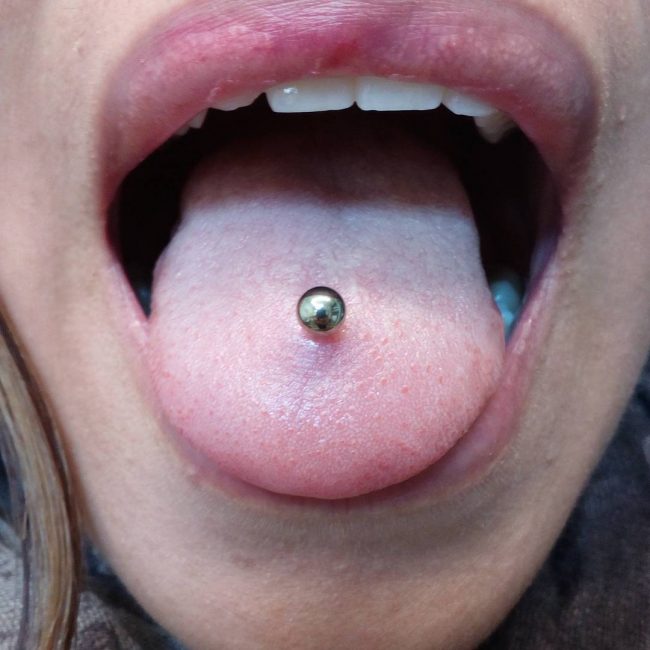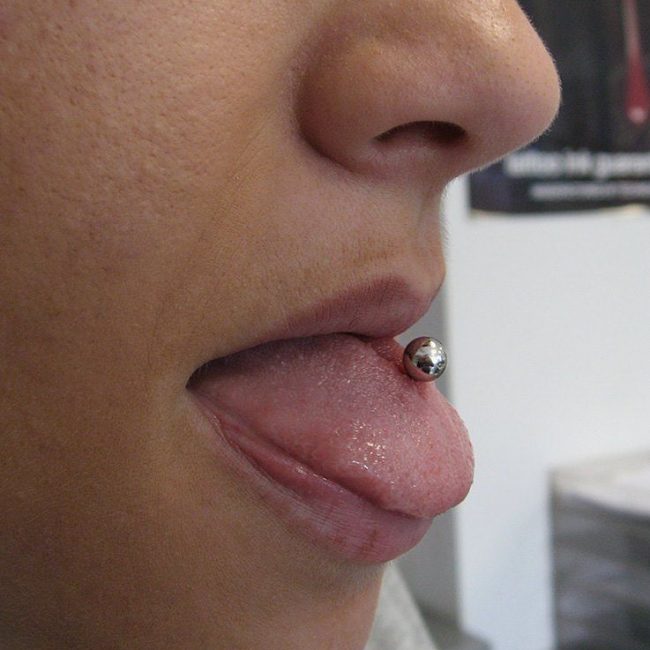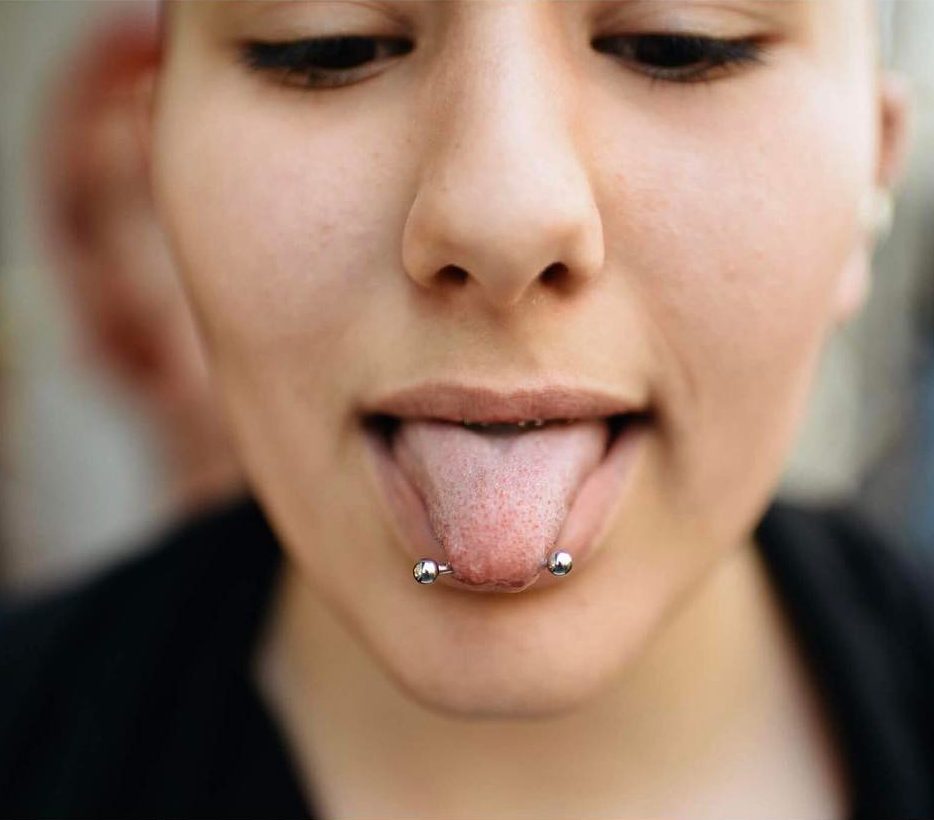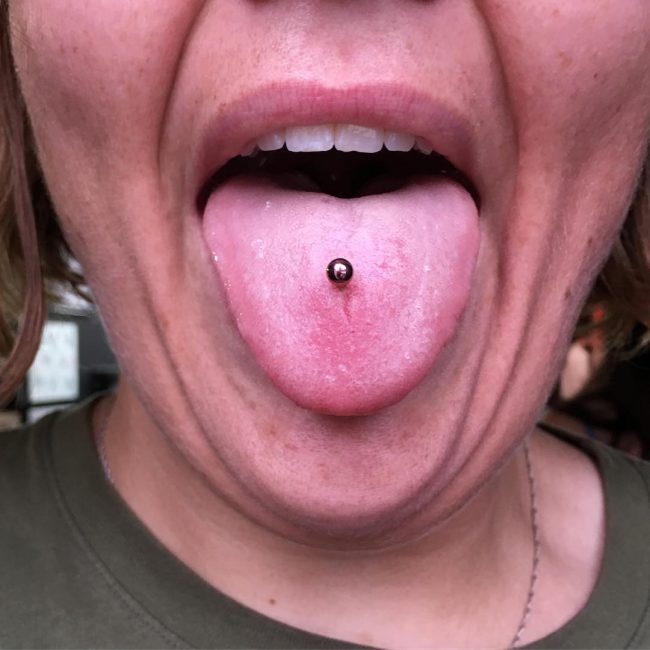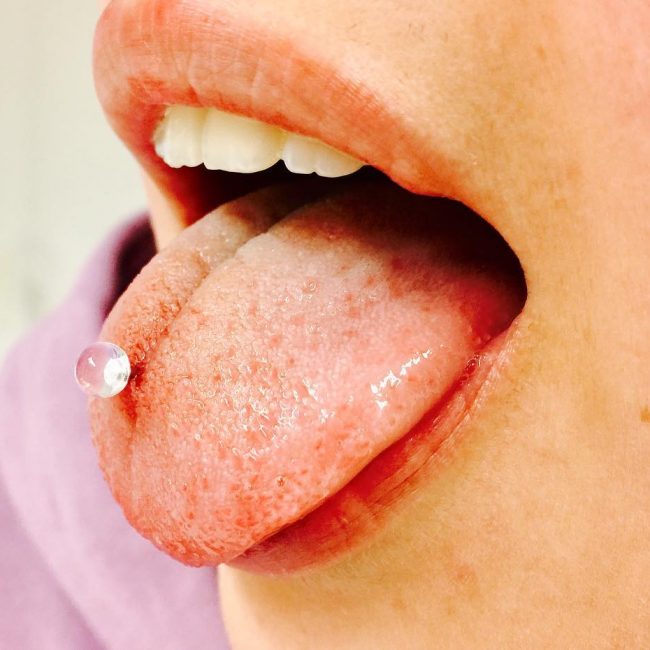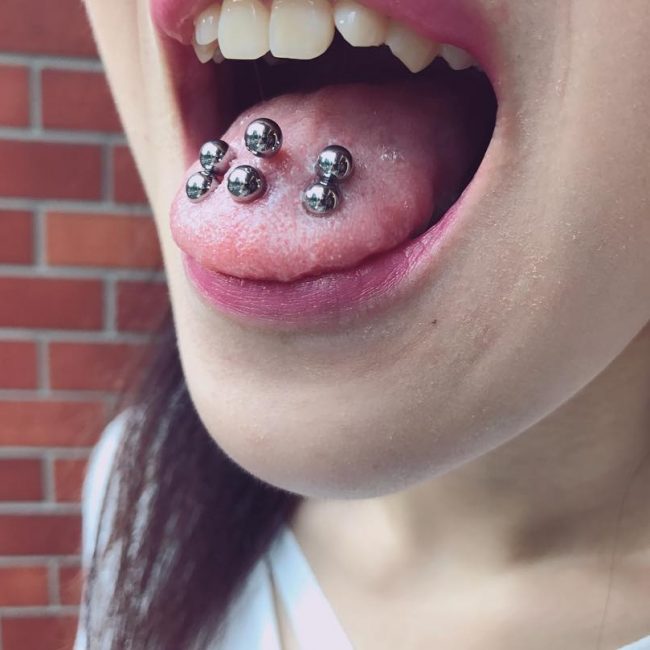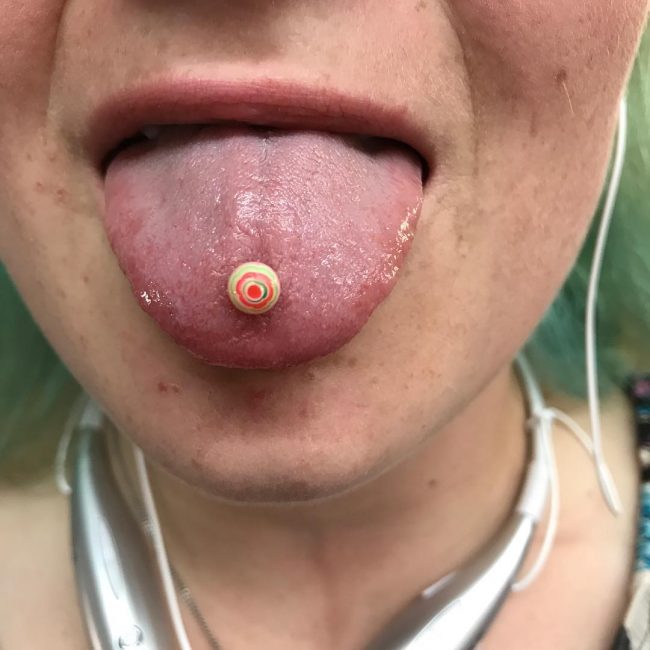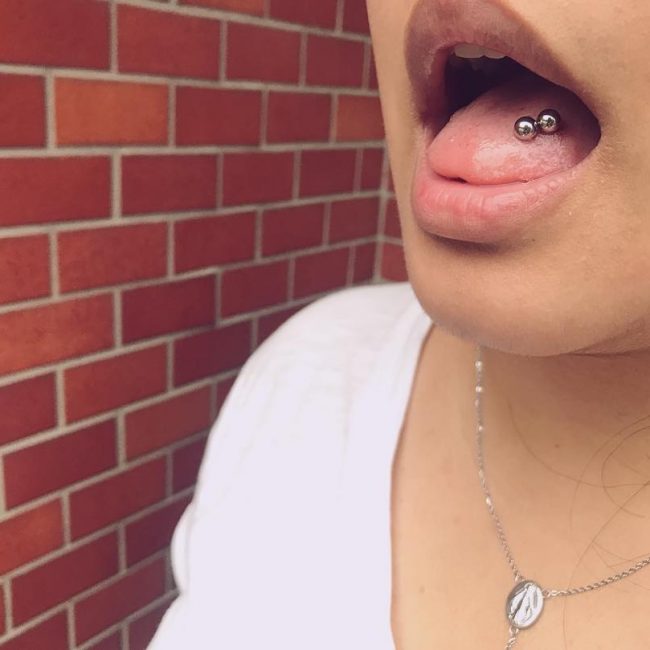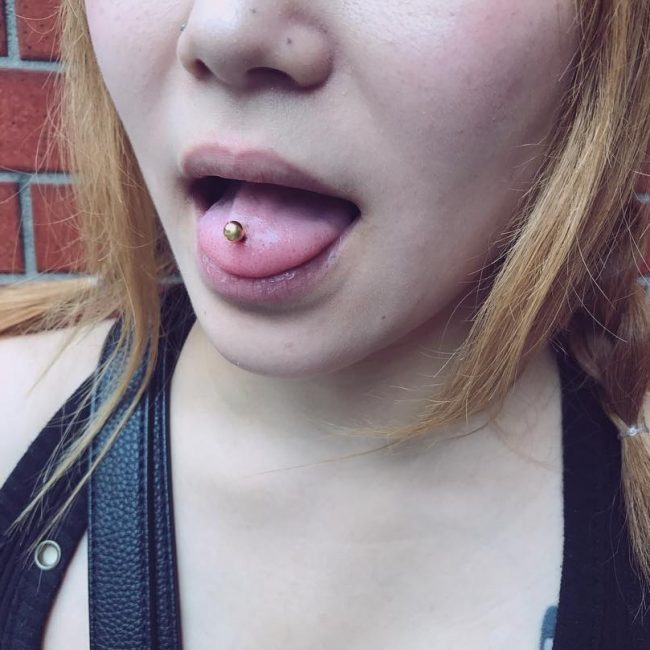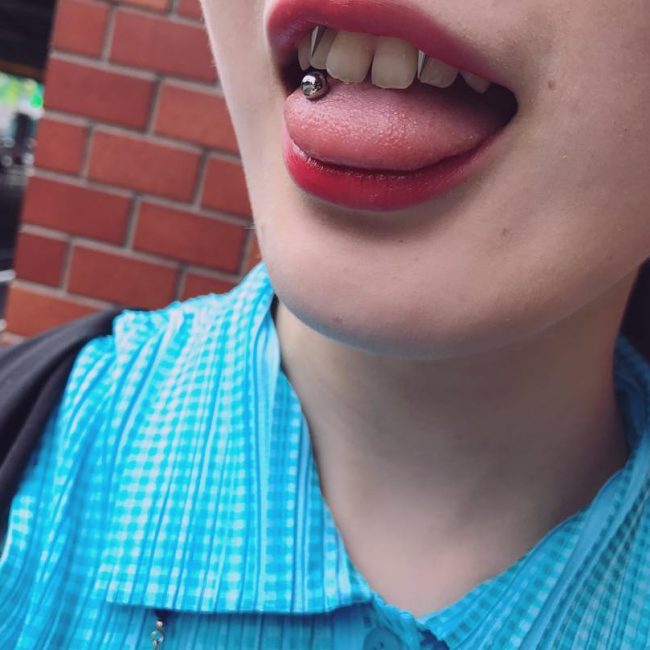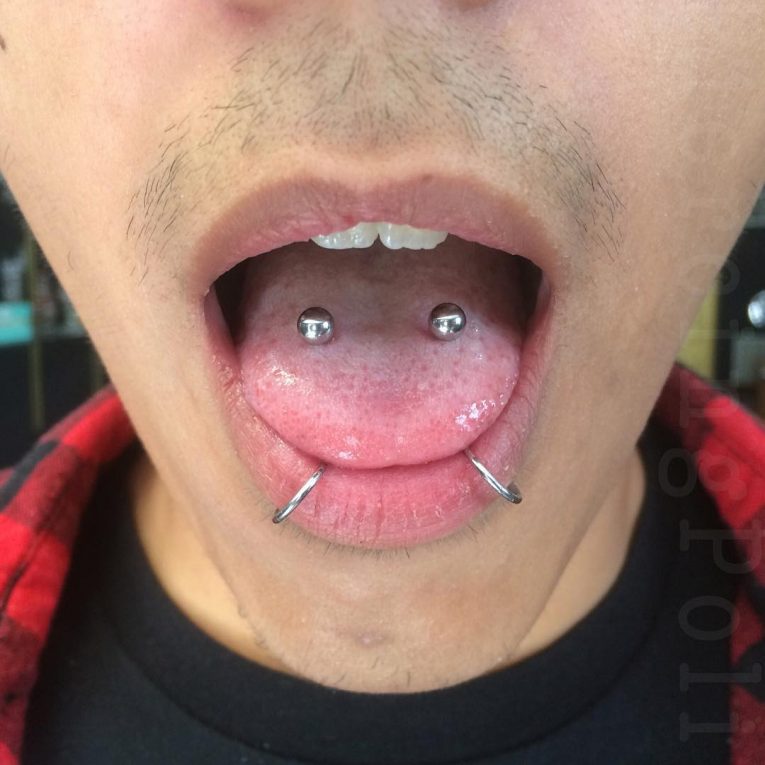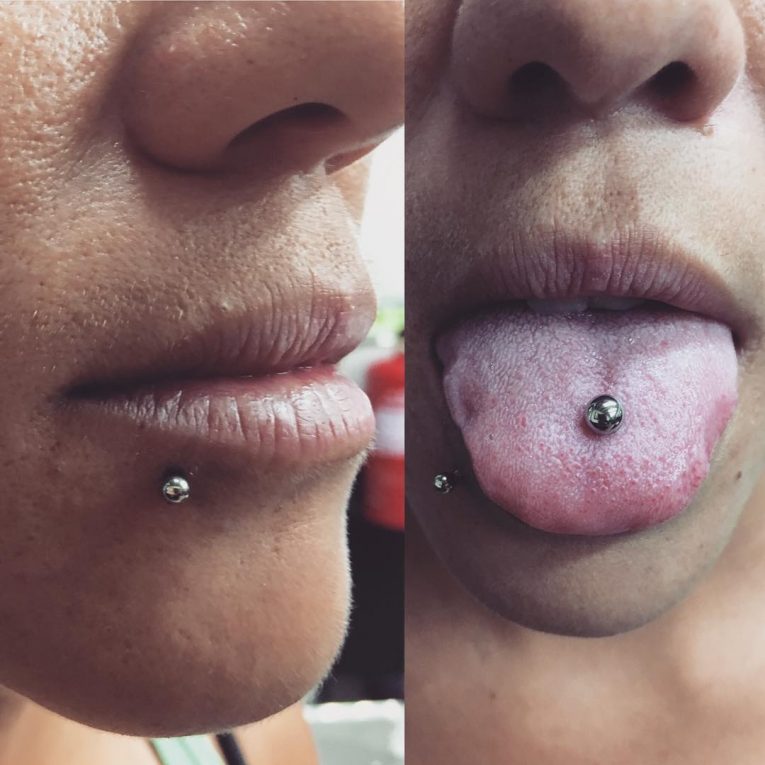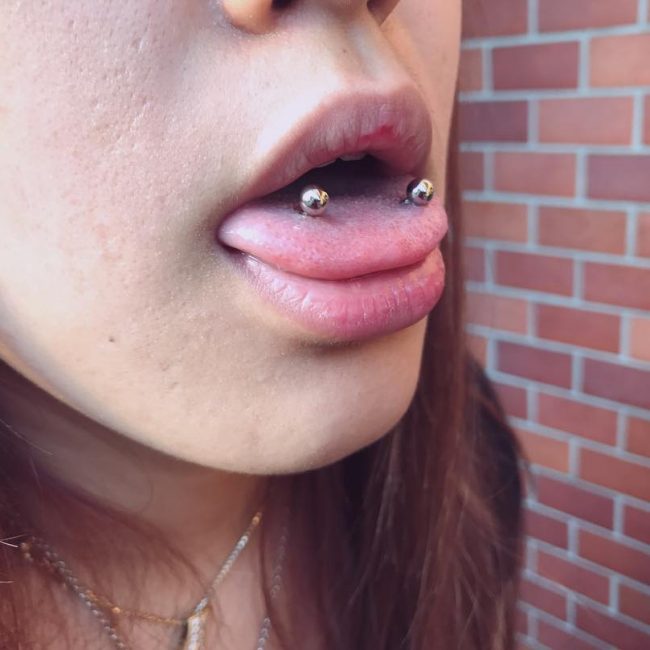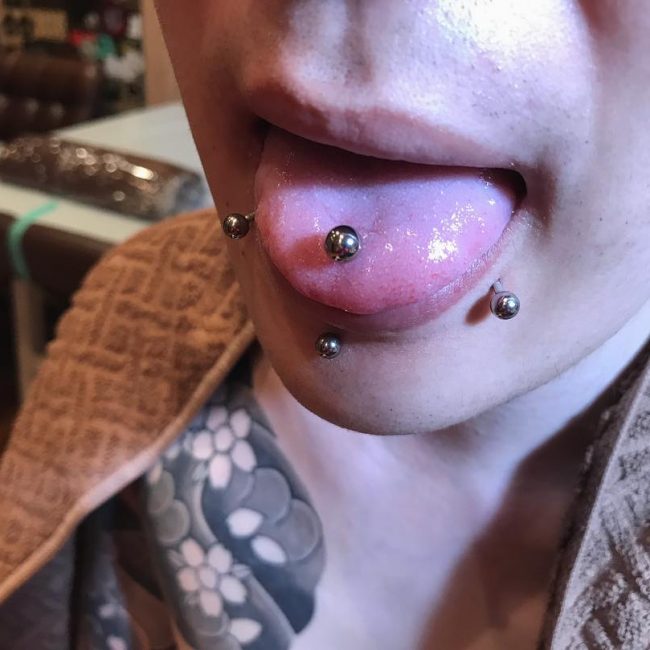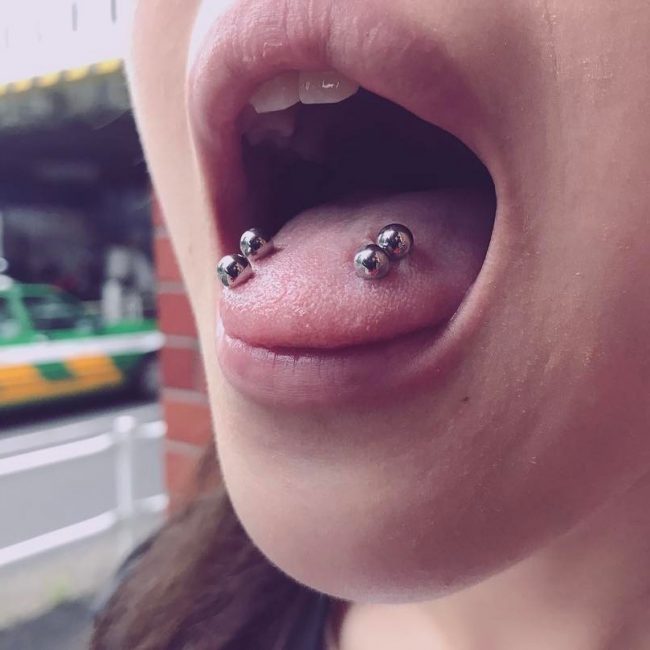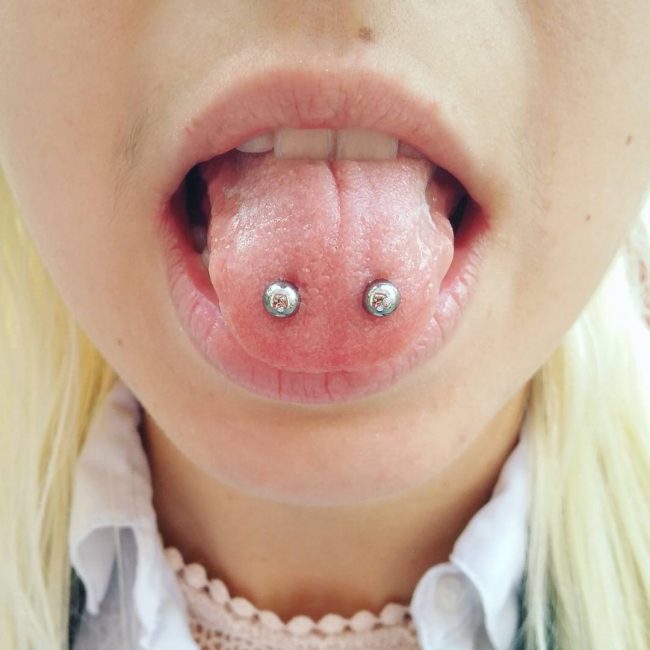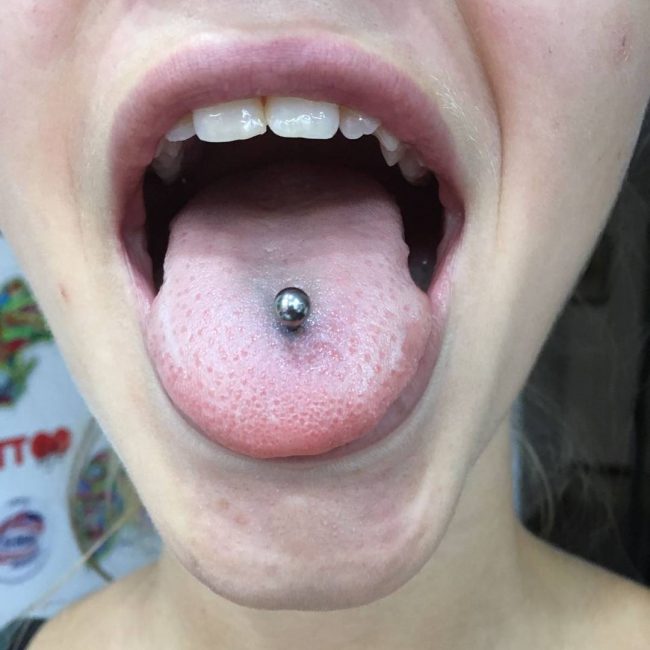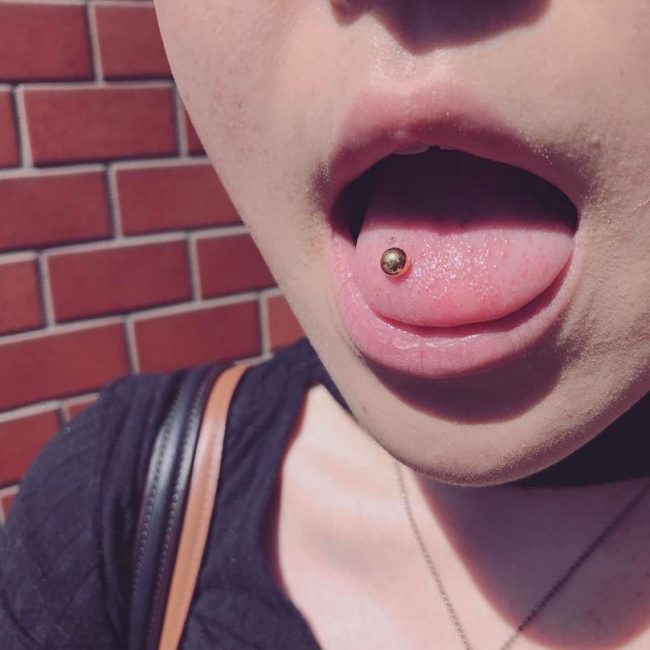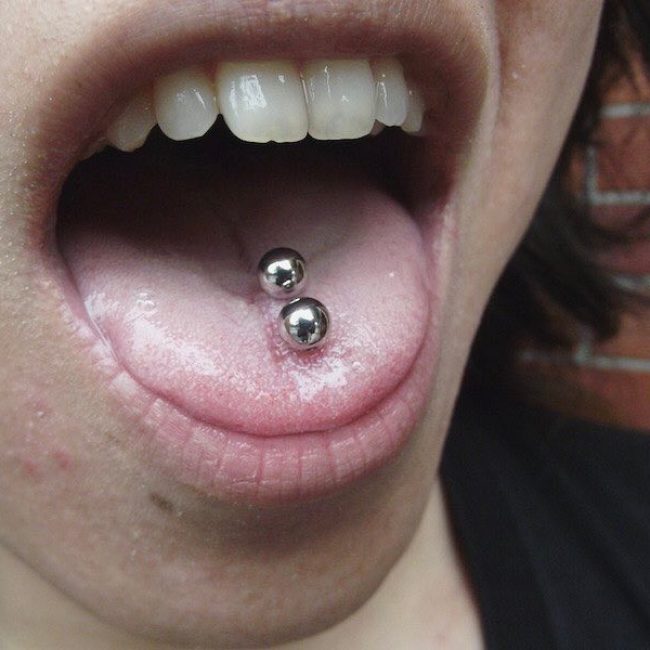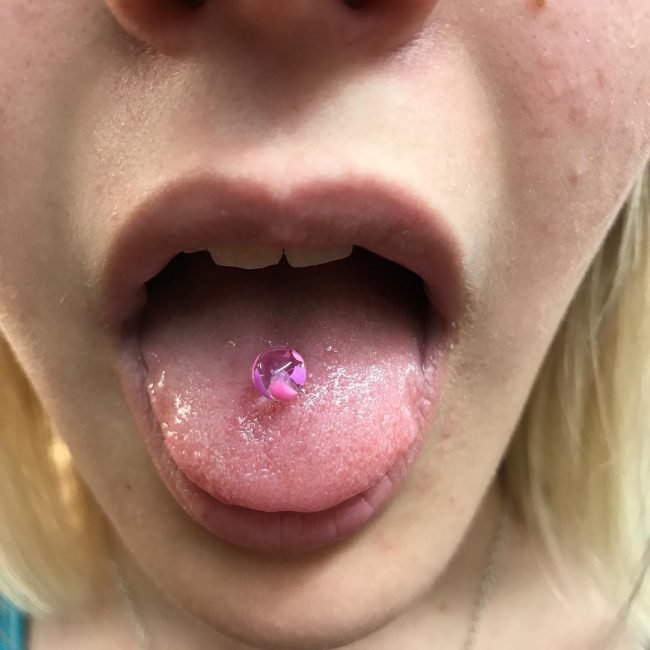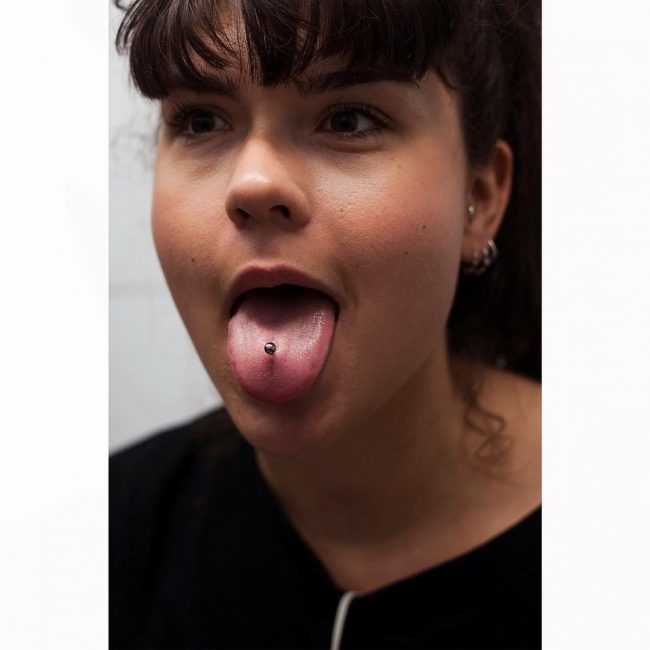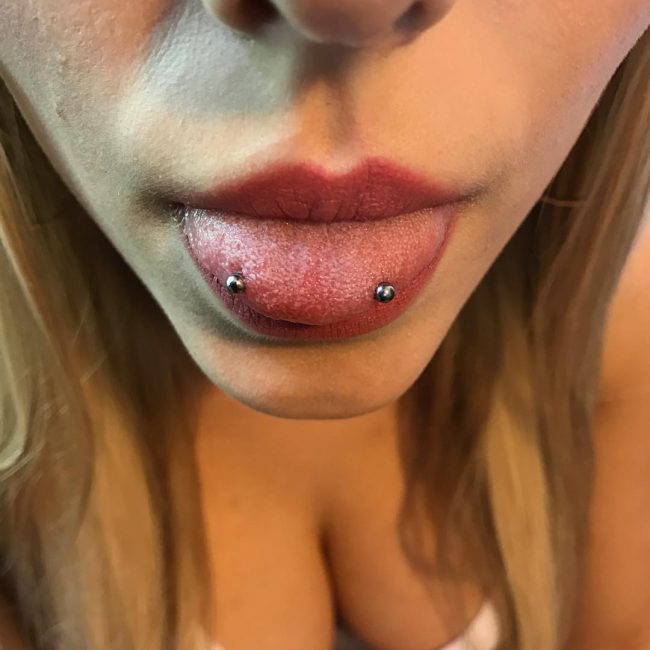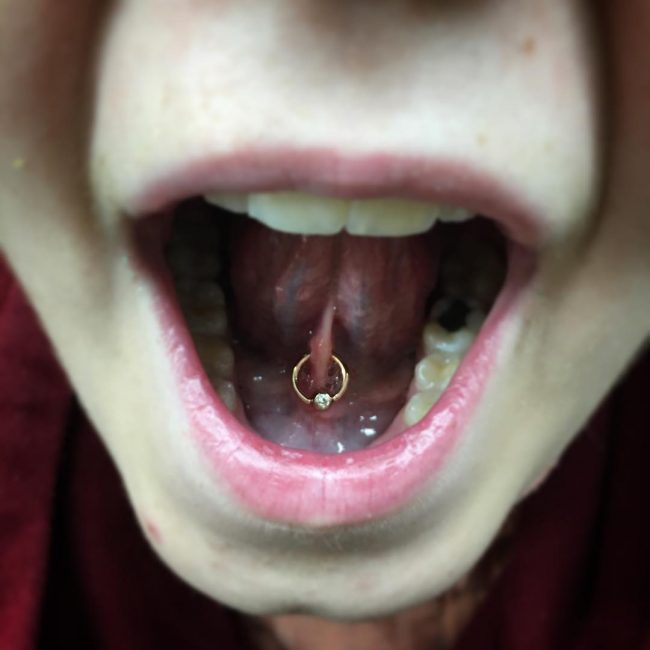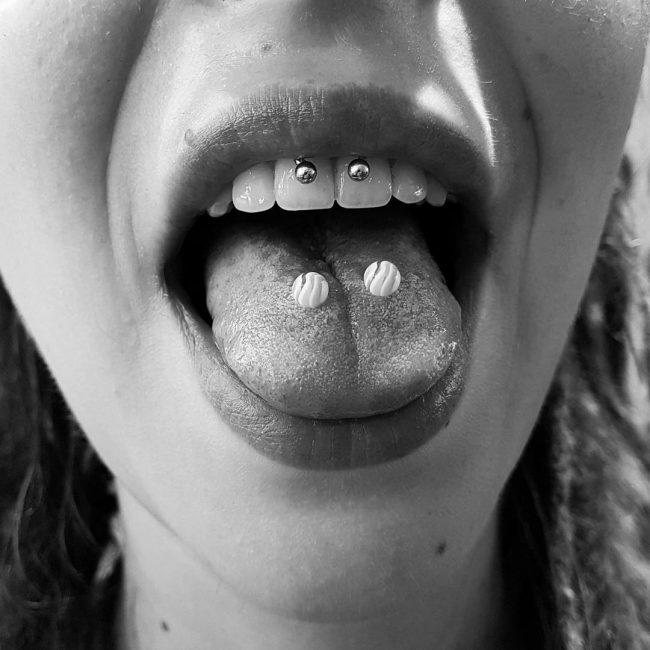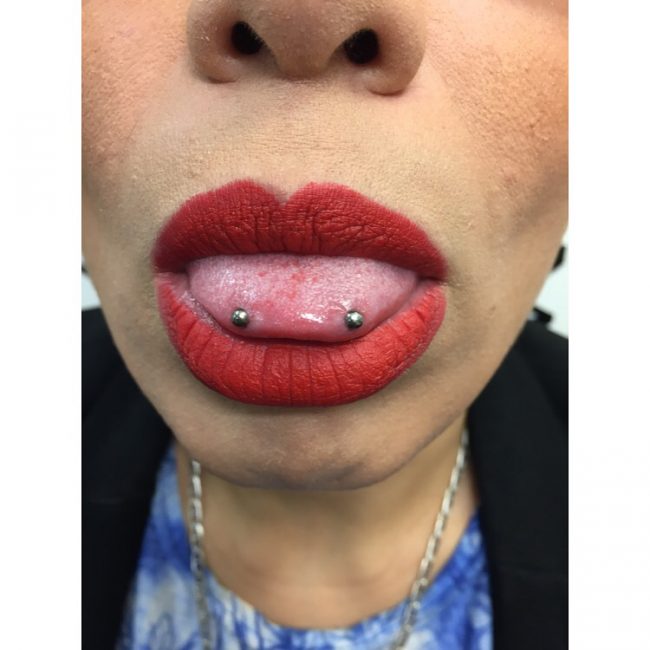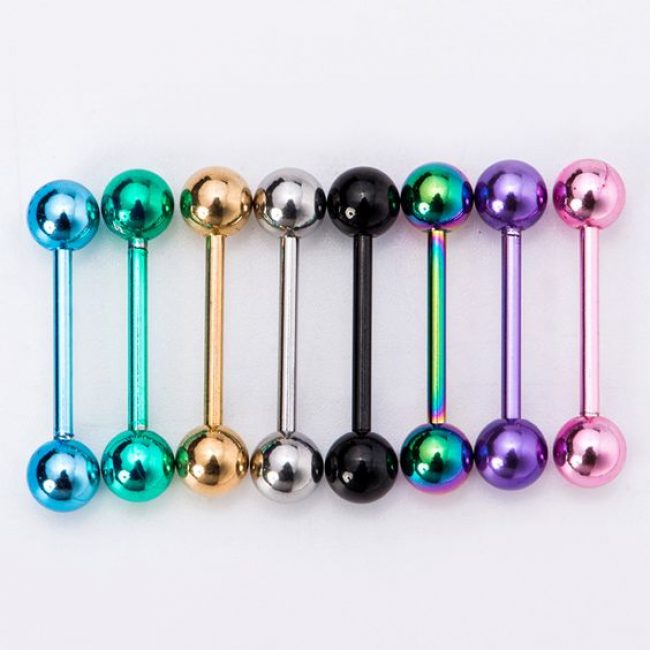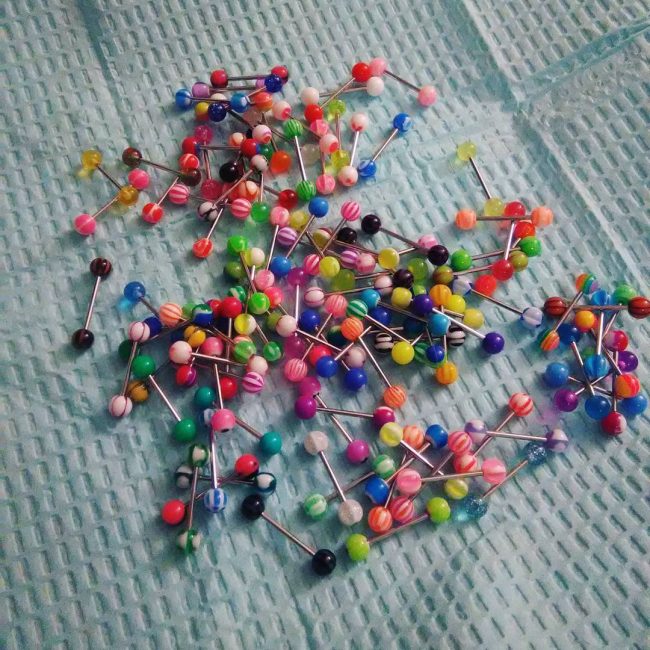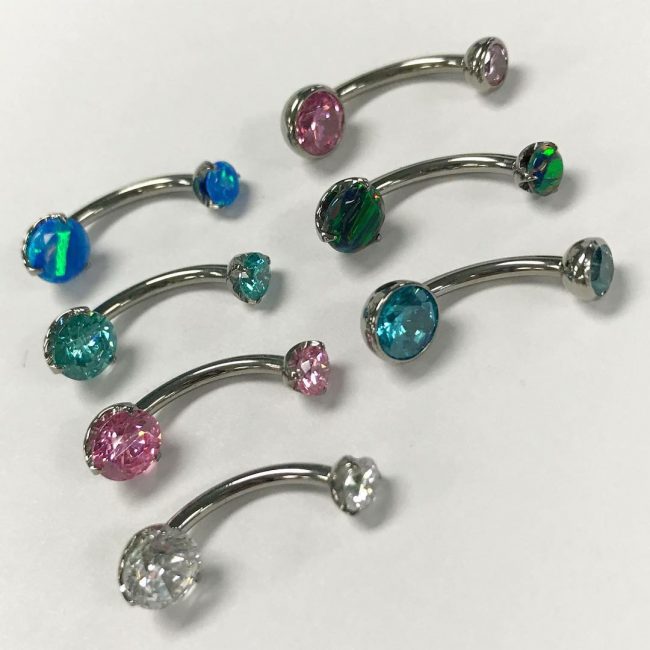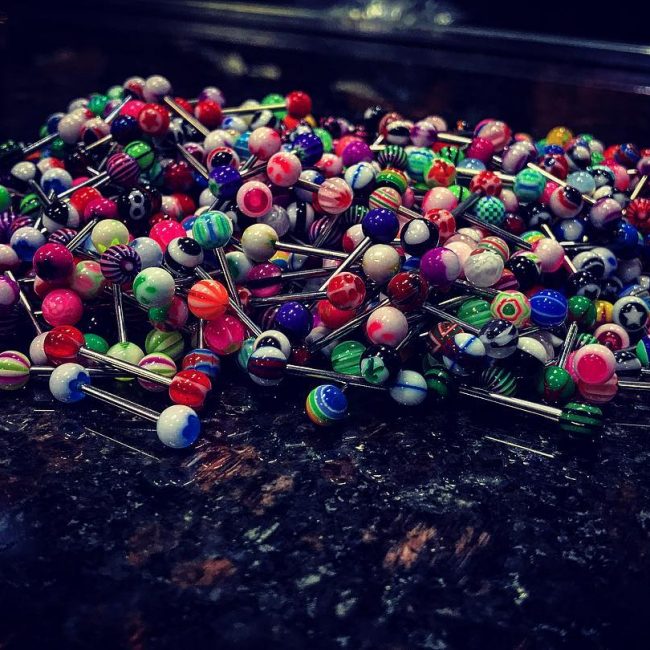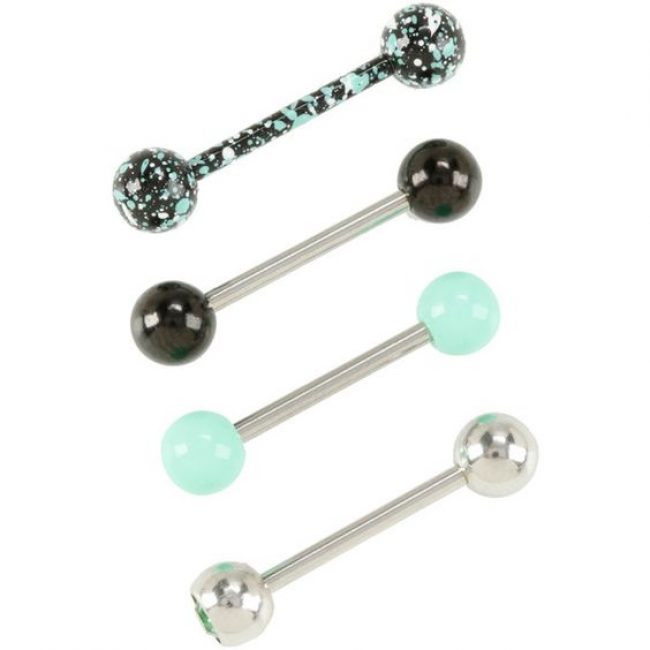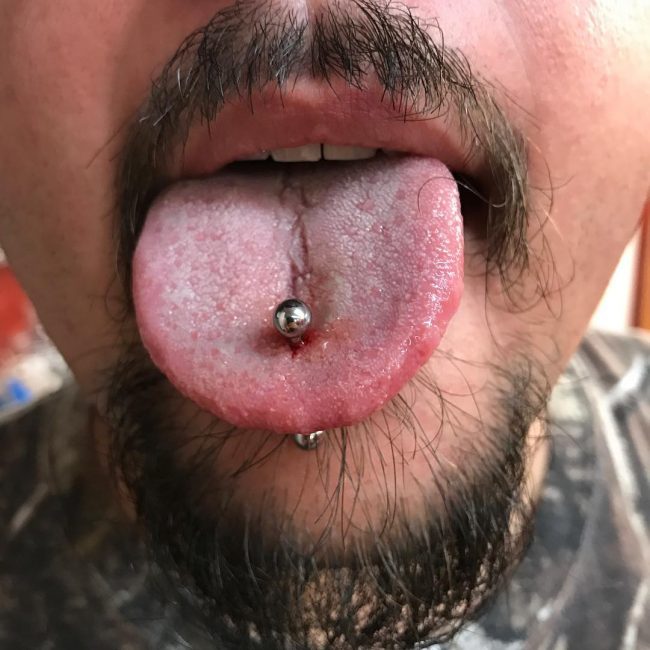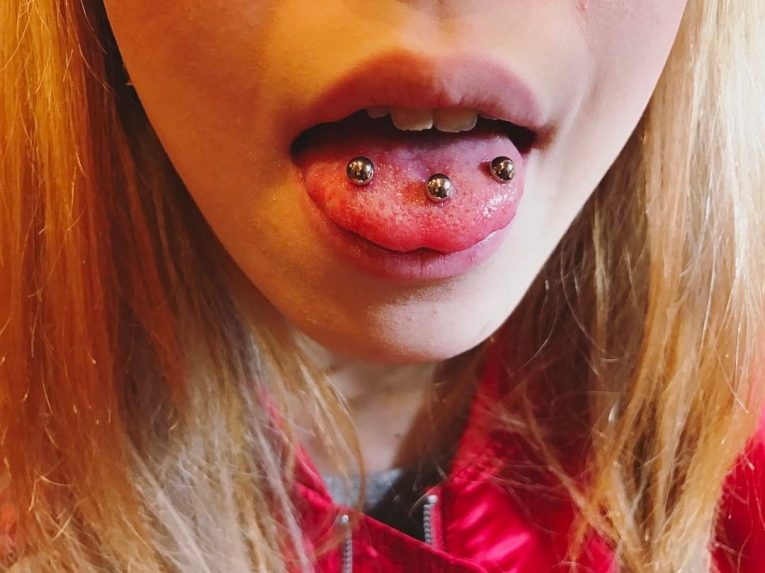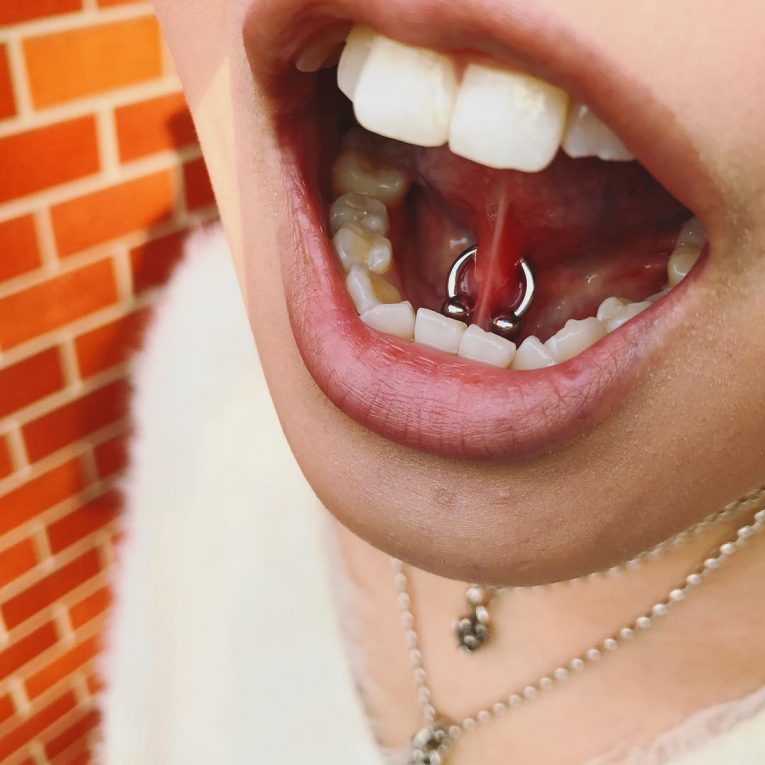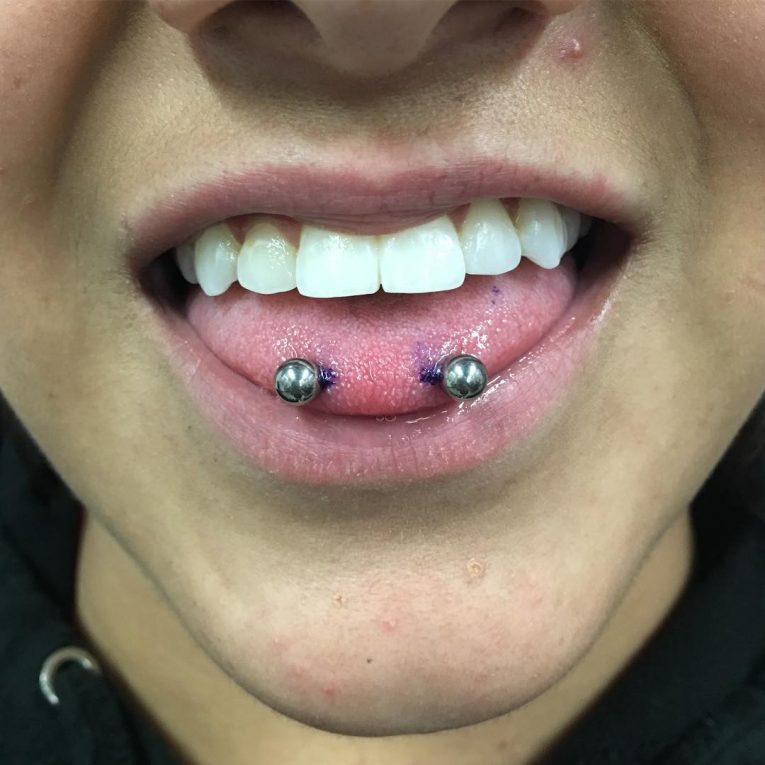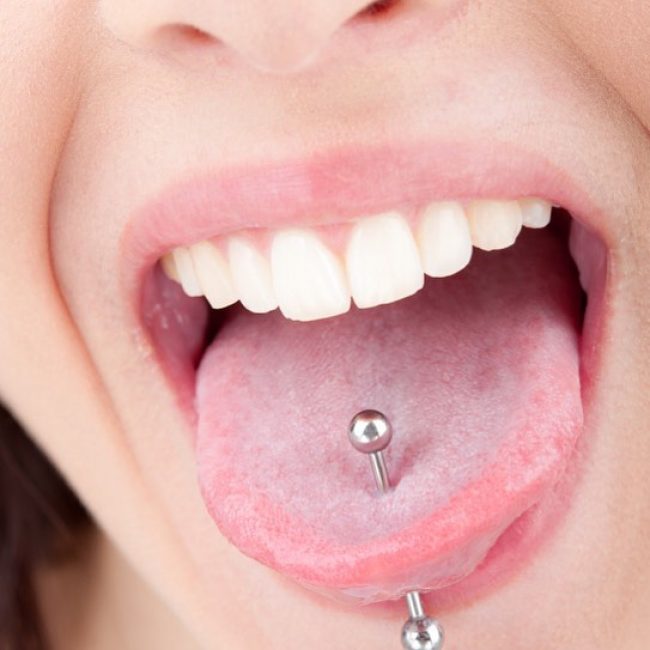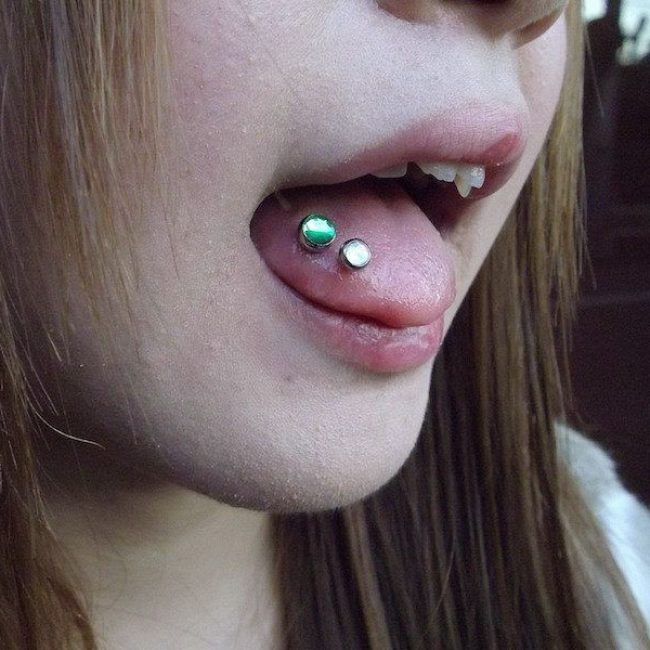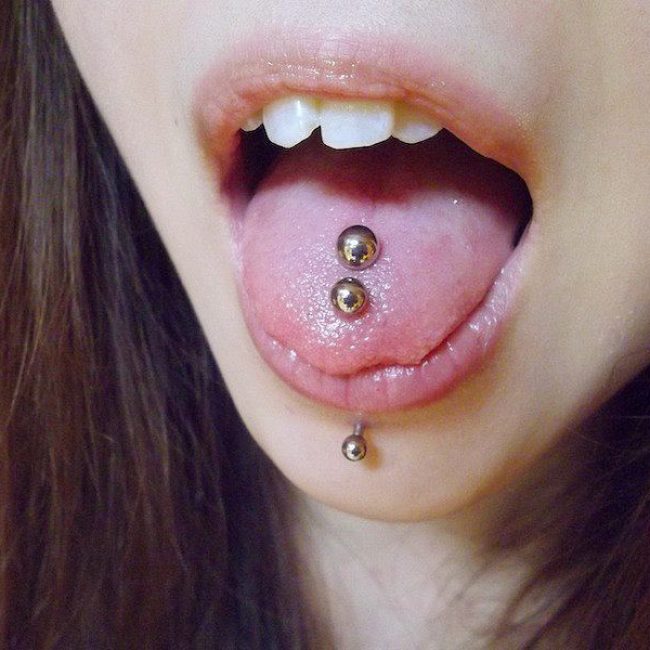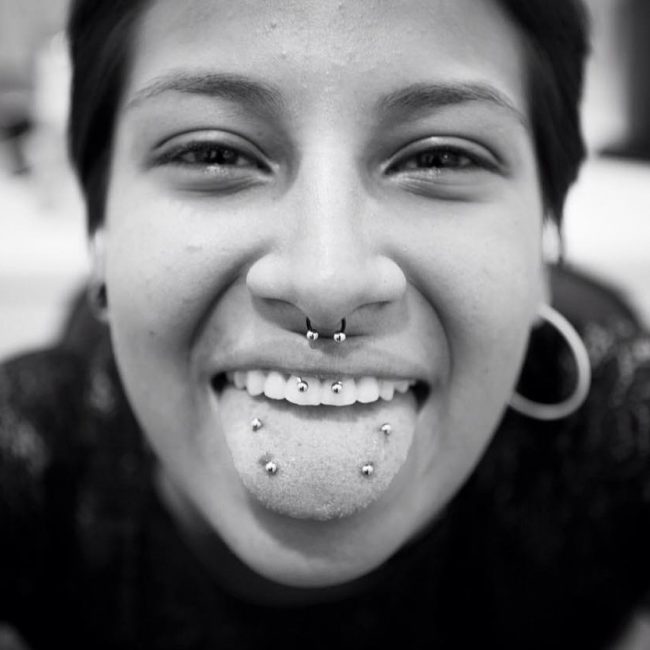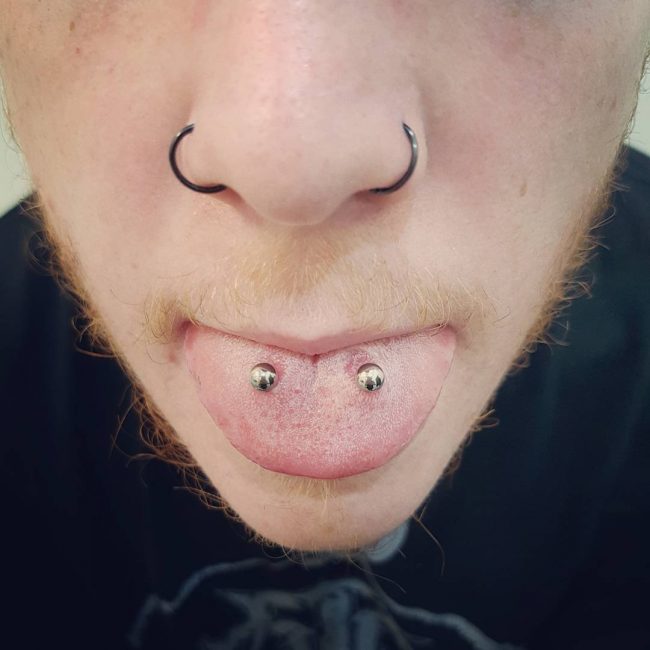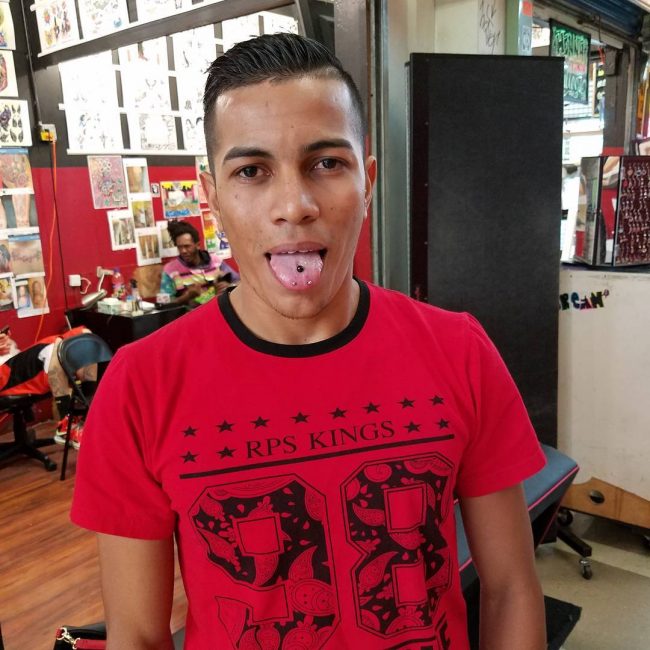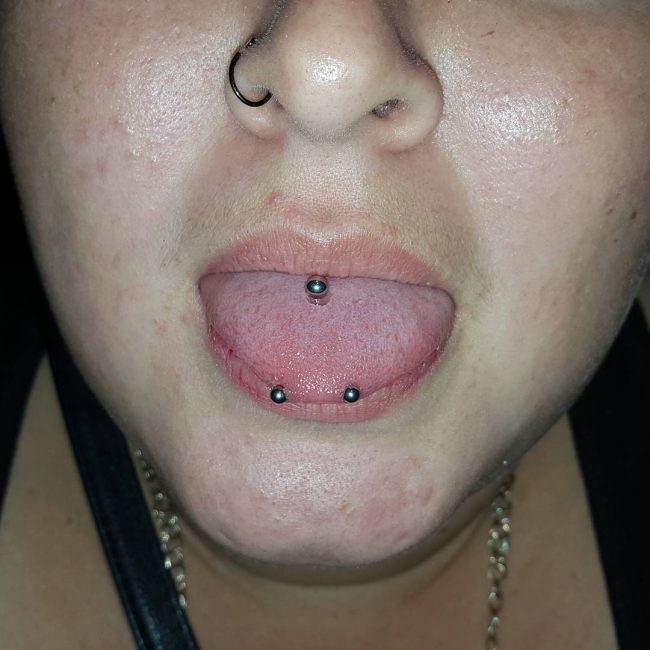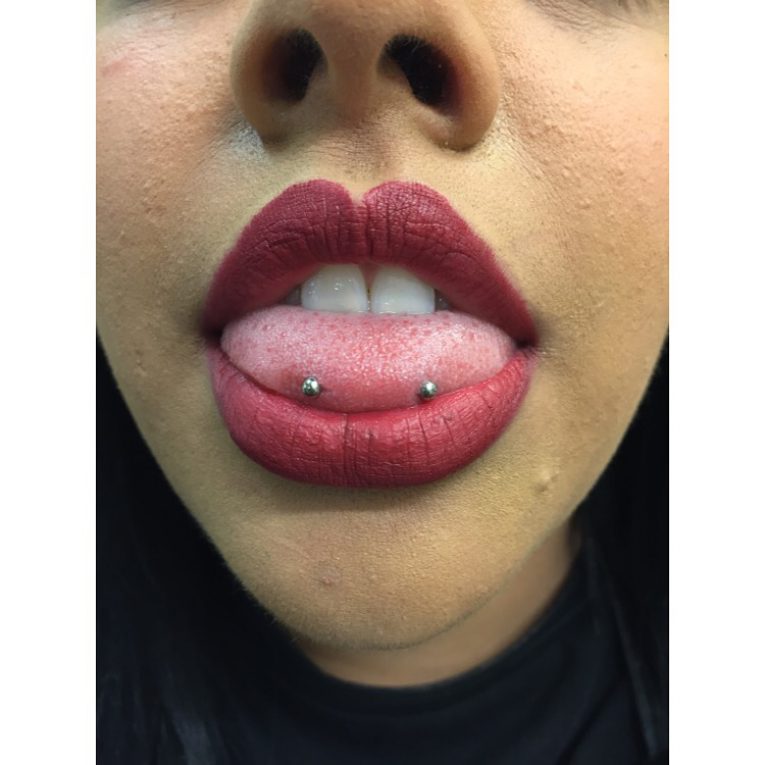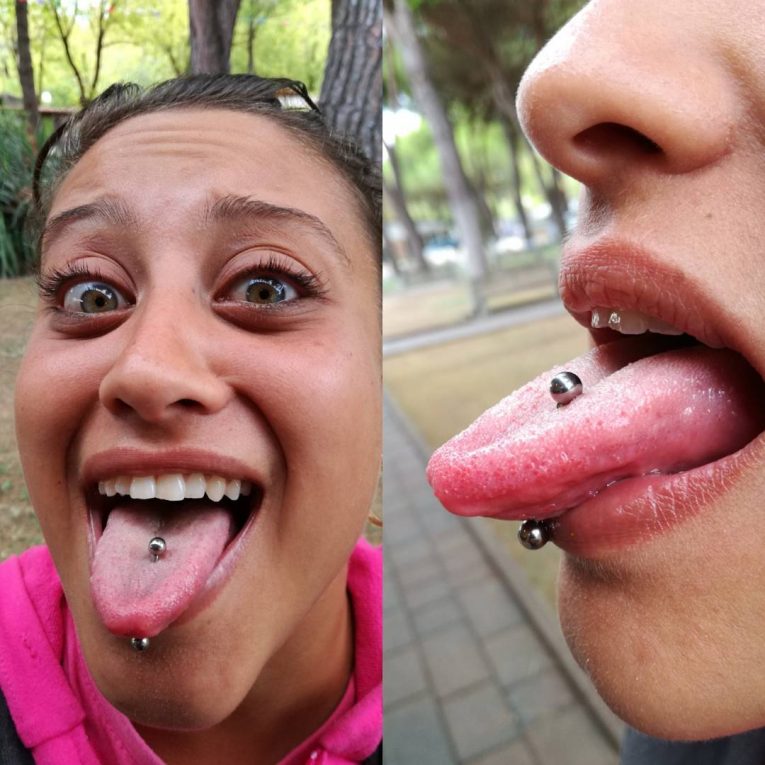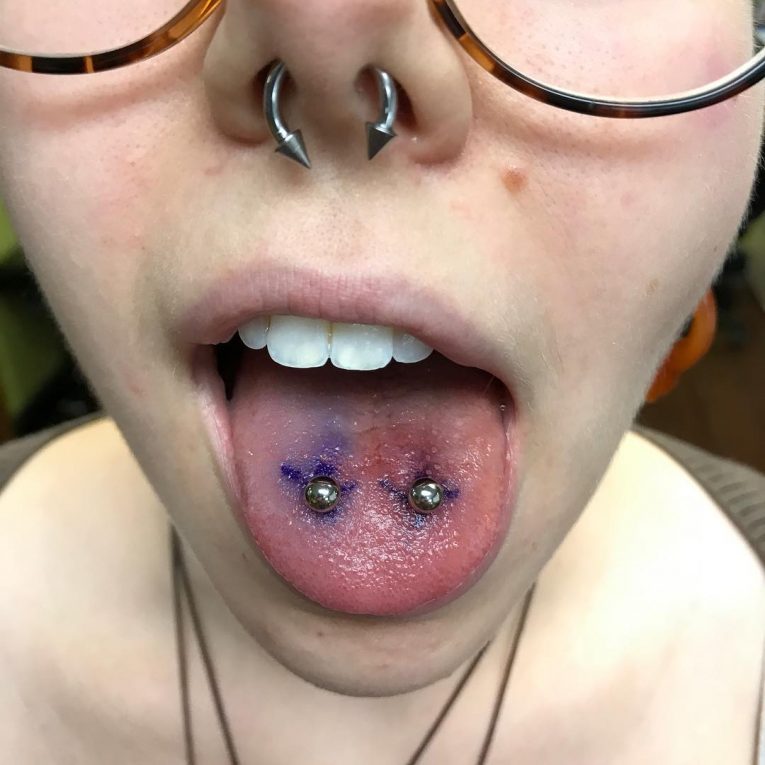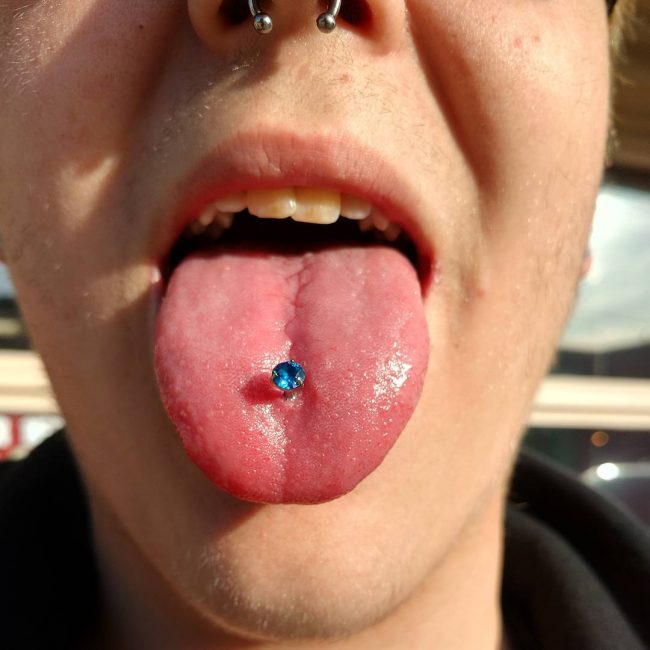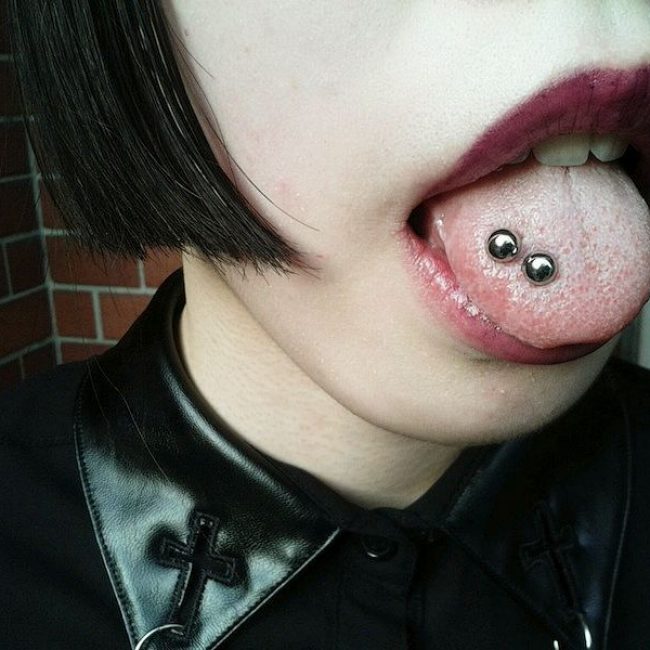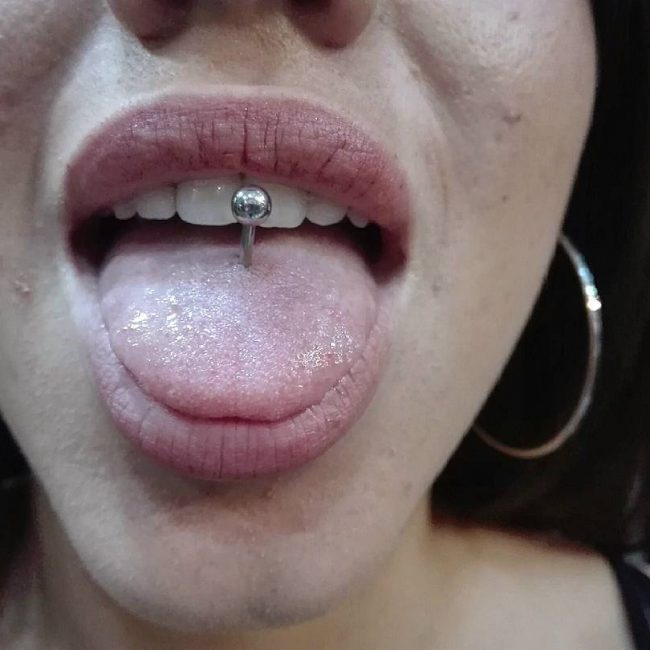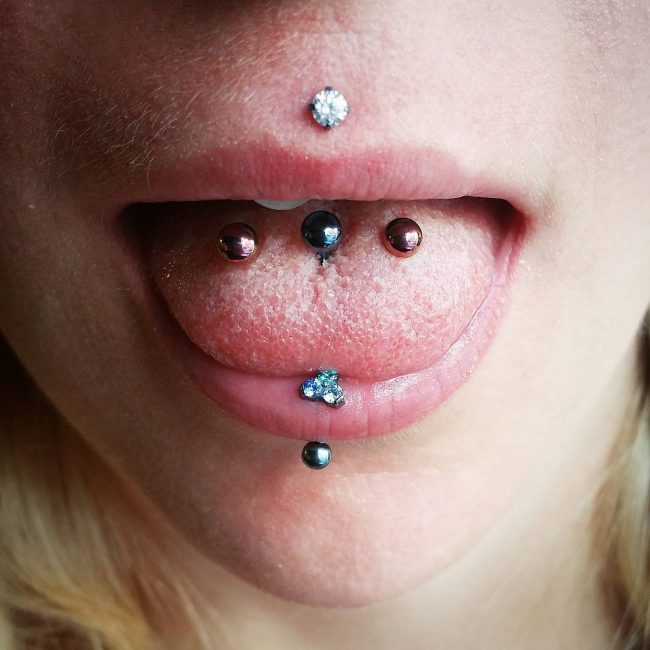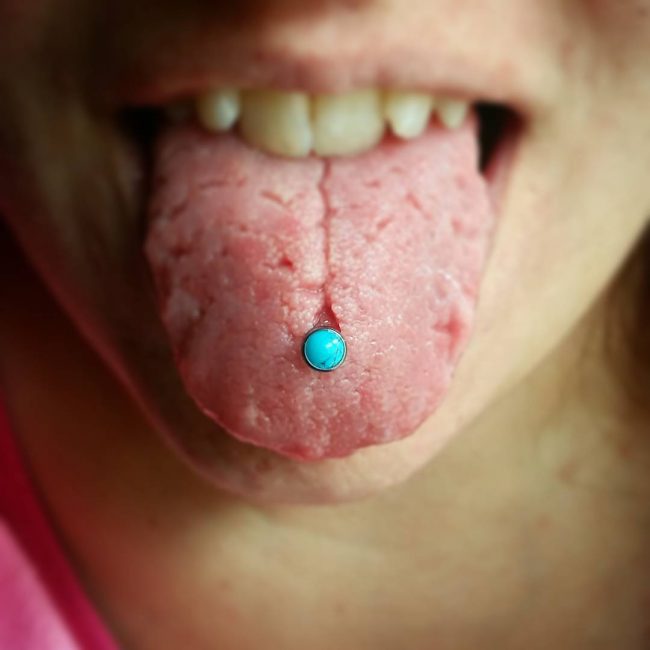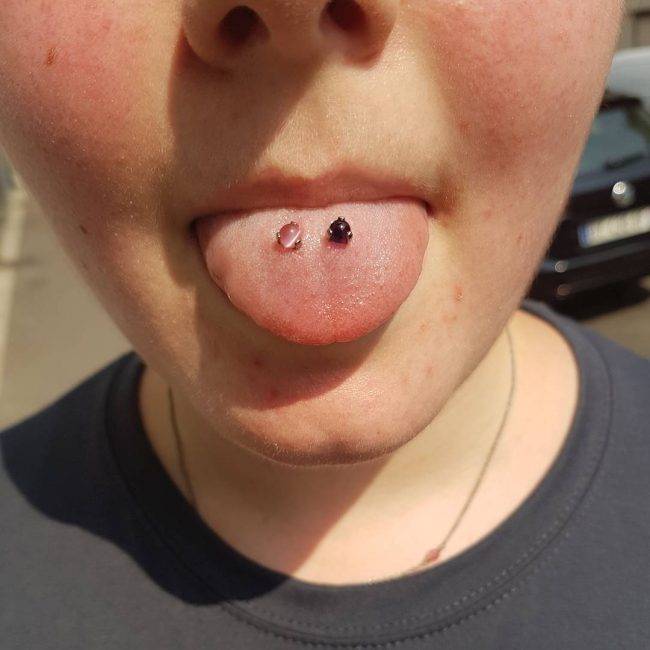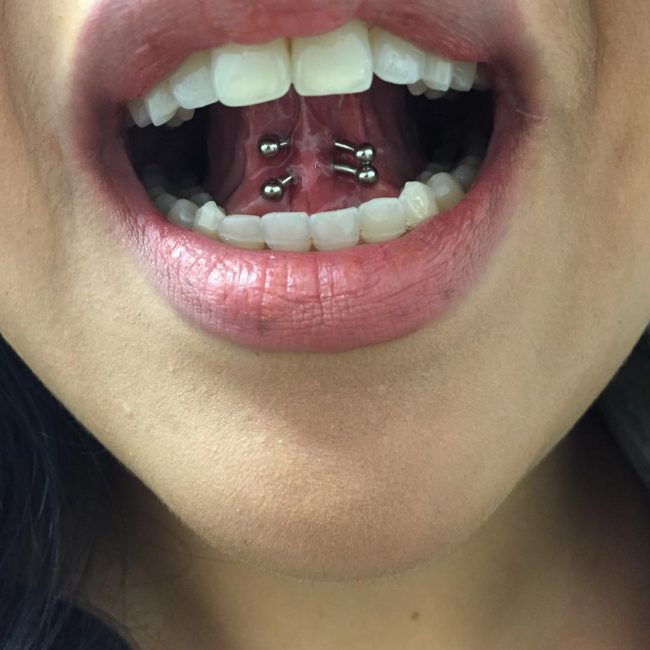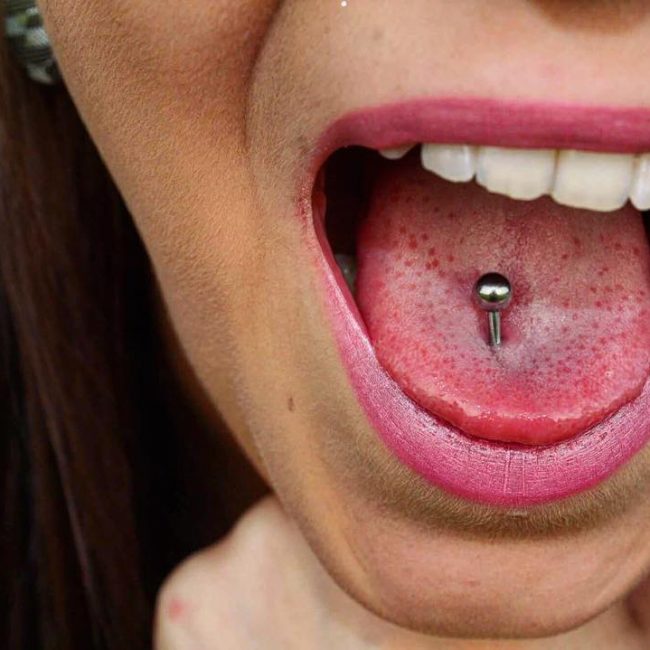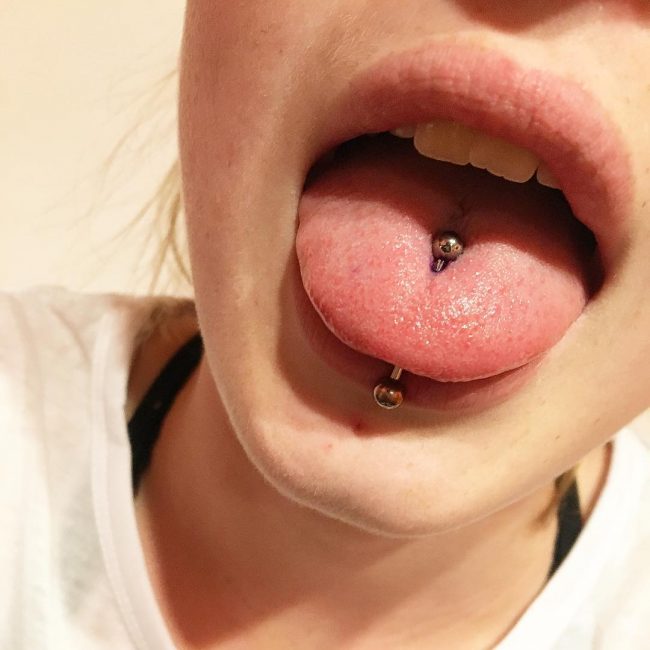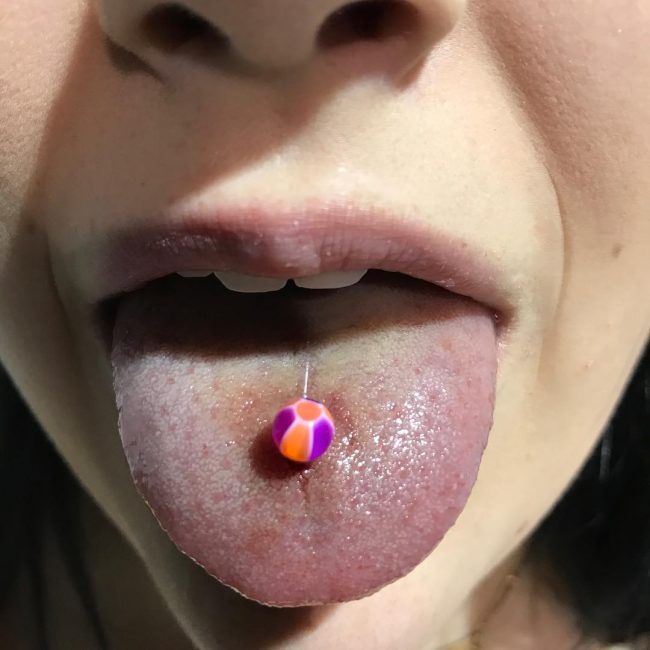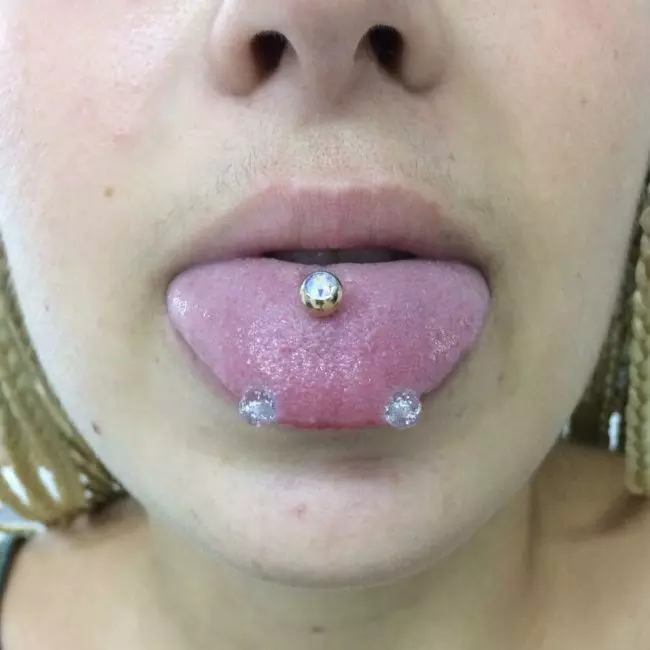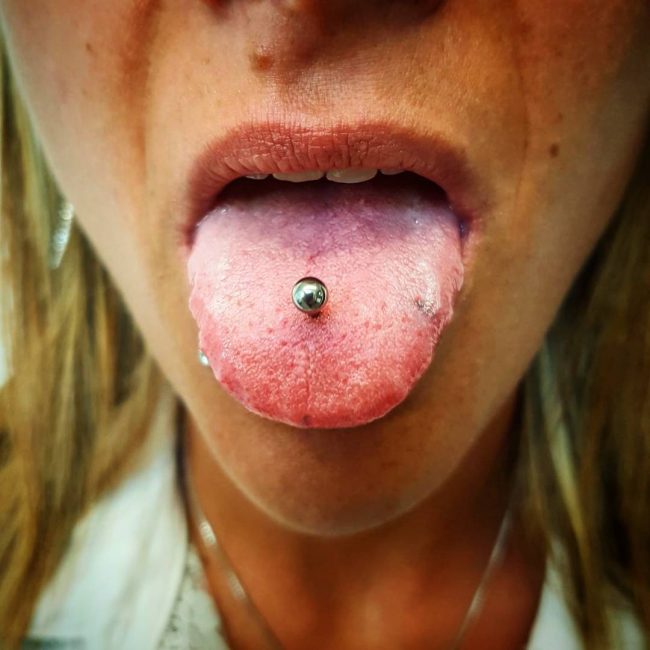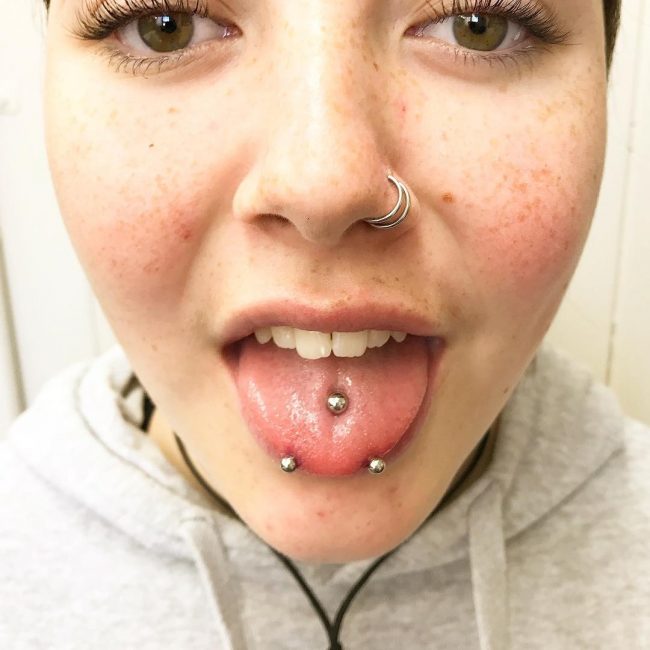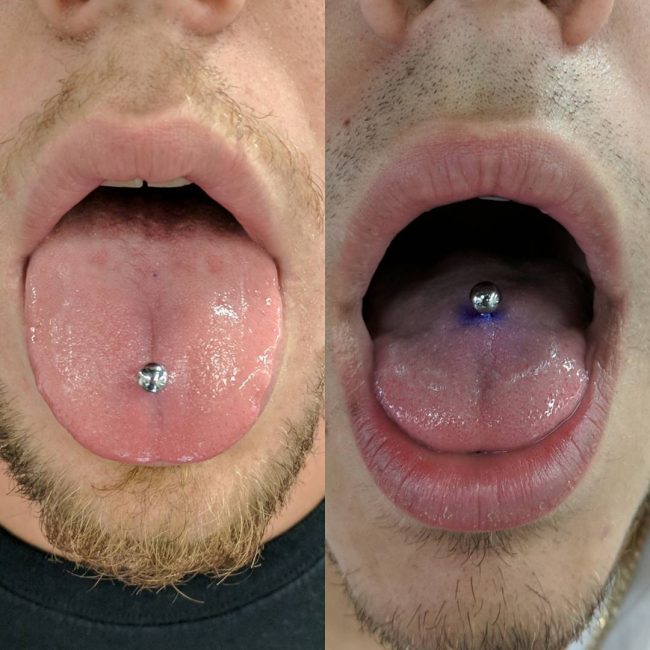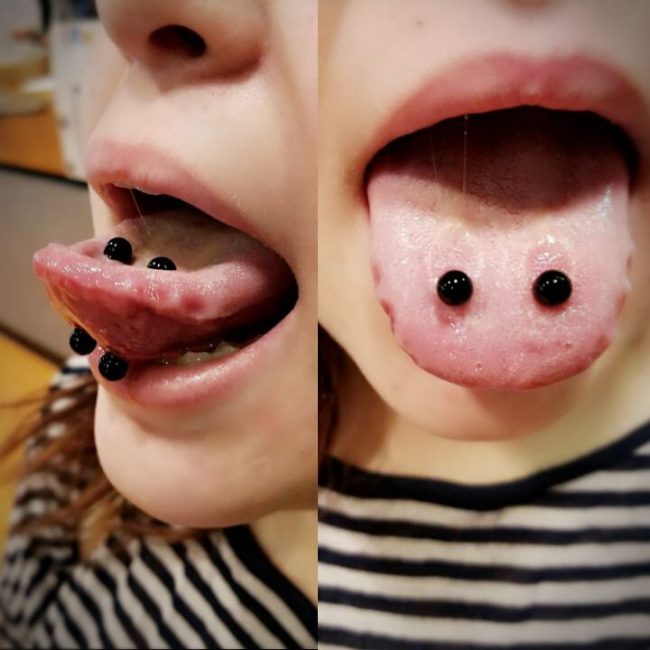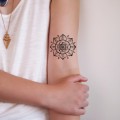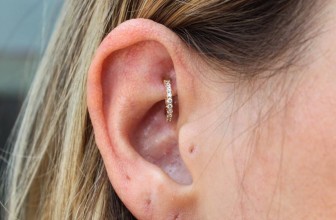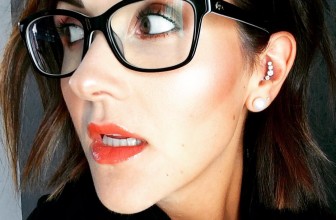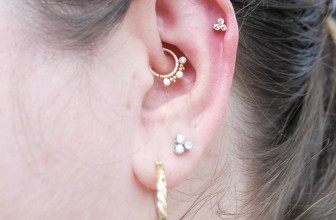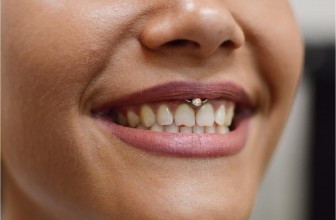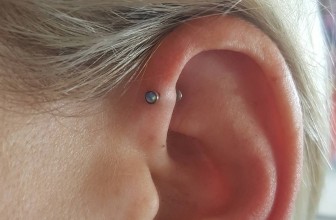Comprehensive Guide to Tongue Piercing – 70+ Inspirational Ideas
Piercing ranks at the top of the list when it comes to the most popular types of body art, and it has been so for many years. It is all about creating perforations in the body for placement of jewelry, and there are various places that you can pierce. One of the most common and probably also the most interesting is the tongue piercing.
And as the name suggests, this piercing is characterized by creating a perforation through your tongue. If you are an adventurous individual and are looking for a new way to create an impressive body art this piercing is an excellent choice
As intriguing as the tongue piercing might be there are some important things that you should know before getting one. It is important to understand the different types of piercing that you can have on the tongue, jewelry types and material, the procedure, aftercare, possible complications and also the pain level. Knowing the history of this body art also makes it feel special.
Contents:
History of the Tongue Piercing
Piercing of the tongue is an old tradition that has been in practice in several cultures for many years. There is sufficient historical evidence that indicates the Aztecs and Mayans were practicing it for different purposes.
In the Aztec society, priests would pierce the tongue to draw blood or inflict pain in one of their rituals to appease the gods. However, there is no evidence to suggest any permanent or long term piercing in the Aztec society.
For the Mayans, piercing the tongue was also for tradition and religious purposes, and their main aim was to draw blood to honor the gods. But, for the Mayans, it would also be a symbol social status. Tongue piercing also has a long history in the Asian societies where they practiced it as an offering to their gods and as proof that one could get into a trance state.
At the inception of the 20th century, this practice started spreading into American and European societies. The spread of this body art is attributed to the increase in interactions between the Europeans and Americans with individuals from Asia and Middle East states where the piercing was widespread in many cultures.
Travelling Carnival employees were among the first individuals to get this piercing in the western world, and most got them on their travels around the world.
The contemporary and permanent piercing of the tongue is a result of the availability of surgical steel jewelry (the barbell style ones), and the popularity was at its peak in the 1980’s and 90’s. However, the body art has been making a comeback in the last few years as more people embrace it as they try to break away from the monotony of ear and nose piercings.
back to menu ↑Who Cannot or Should Not Get this Piercing?
It is important to know that unlike other piercing types it is not for everyone. Human tongues are not all the same. While most people can have this piercing without complications, there are those that should not get one. You should not get this piercing if:
#1 You have a short tongue or cannot stick it out very far.
#2 Your tongue has a lot of webbing that stretches far up. Puncturing the webbing can cause excessive bleeding swelling or even suffocation.
#3 You have one or more veins in the wrong place, and this is more so for those who have one down the center of the tongue.
#4 You suffer from certain health conditions like nerve issues or paralysis.
#5 You are under the age limit which in most places is 16 or 18.
back to menu ↑The Tongue Piercing Procedure
Once you decide to get this piercing, the first thing should always be to look for the best studio. It is important to go for those that have been piercing for a long time because this means that they have enough experience. Also, ensure that it has a good reputation and that the piercer is a licensed professional. Avoid going to a studio just because it is inexpensive since the cheaper the service, the lower the quality.
After picking a studio, the piercing procedure will involve three critical stages which are preparation, piercing, and aftercare. All are important, and so you should know what to expect at each stage.
Stage 1: The Preparation
When you get to the studio, the piercer will first need to examine your tongue to determine if it is suitable for piercing and also the best places to do it. This examination will entail checking your tongue’s length and the placement of your veins. In some instances, the piercer has to use a blue light.
This step is vital because a piercing should not be too close to the tip, touch the teeth or cause any speech impediment. And so it is important to ensure that your piercer does not skip this stage and do the piercing directly.
Stage 2: Piercing/Puncturing the Tongue
If the piercer is satisfied that your tongue’s size is viable for piercing and knows where the veins are the next step is to do the actual piercing. For this, the piercer will start by marking the spot to pierce and then clamp the area. After this, he/she will make the piercing. It is important to make sure that your piercer uses a new and sterile needle.
Once the needle goes through the tongue, the piercer will remove it and slide in the jewelry. The last step is to attach the balls to the tongue ring, and you are ready to leave the studio.
Stage 3: The Aftercare
After the piercing, the aftercare is in your hands. A good piercer will advise you on everything you need to do to ensure a quick and safe healing process, but everything is still up to you. Since the piercer does everything with sterile equipment, any infections that you get will come from lack of proper and enough care.
But, the good news is that the enzyme Ptyalin and LAP (Lingual Antimicrobial Peptide) in the mouth kill bacteria and make it hard for the wound to develop infections.
Aftercare is the most important stage of any piercing, and so you should never overlook it. The piercing will take between 10 and 14 days to heal, but your tongue will remain thick for about two months.
Good oral hygiene and avoiding things like kissing and oral relations for some time is in most cases enough to ensure that the piercing heals fast and without complications. However, you can also use zinc and B-vitamin supplements to enhance healing.
back to menu ↑Types of Tongue Piercings
Your piercer will always advise you on the best place to have the piercing based on the size of your tongue and placement of veins. There are different piercings that you can have on your tongue. And their names are according to the location of the perforation. Here are some of the most common tongue piercing styles.
#1 Midline Piercing
The midline piercing is what comes to mind when you think about piercing your tongue as it is the most common. For this piercing, the piercer will create the hole in the midline of your tongue, and it is in most instances just under 2 centimeters from the tip of the tongue. In most cases, it uses a straight barbell for the jewelry, and some variations will entail getting two parallel holes instead of one.
#2 Tongue Web Piercing
For the web piercing, you will get two perforations on both sides of your tongue. This piercing is also what many people refer to as the venom piercing or the double tongue piercing. In a simple definition, they are just two side by side holes on the tongue, and a straight barbell is the best jewel to have on them
.
#3 Horizontal/Vertical Piercing
The horizontal piercing entails puncturing the middle part of the tongue from right to left. For the vertical piercing, the hole is from the back to the front of the tongue but still in the middle. These piercings will require a thick enough tongue to get the placement right. It is also important to note that many experts do not advocate for them because if done incorrectly they can cause severe nerve damage on the tongue.
#4 Frenulum Linguae Piercing
If you prefer something unique and hidden, a frenulum linguae piercing will work well for you. It entails perforating the frenulum which is just underneath your tongue, and it will only be visible when you lift your tongue up and against your hard palate. When getting one, the piercer can insert either a circular or curved barbell.
#5 Side Tongue Piercing
The side piercing is quite similar to the traditional midline since it also uses the straight barbell jewelry and it is a couple of centimeter from the tip of the tongue. However, unlike the midline, the hole is placed either on the right of left side of the tongue. Some people will also prefer to have perforations on both sides to create a double piercing design.
#6 Tip Tongue Piercing
Tip tongue piercing is what most people know as the snake eye piercing. It is a fascinating piercing that will entail perforating the tip of your tongue instead of the middle. The piercing is a type of horizontal tongue piercing, and the piercer will create it by running a needle at the tip from right to left, but it will also work best for individuals with a thick tongue.
Although there are many jewelry options for this piercing, the long barbell is the best choice. When wearing the long barbell, it will appear like a piercing with two separate jewelry.
back to menu ↑Jewelry
Like any other piercing in the body, you will have many options when it comes to choosing the jewelry for your tongue piercing. However, the right jewelry for you will depend on the type of piercing or location and also your preferences. But when it comes to making your pick you should always take into account factors like the jewelry type, size, and material.
-
Types
The straight barbells are the most common jewelry types for piercings on the tongue. These barbells or tongue barbells work for all piercing types on the tongue. They come in different ranges, colors, and pattern and so you can be sure of finding one that suits your style and preferences.
Many people refer to the barbells as tongue rings, but this is not correct because they are not rings in most cases. However, there are still some curved barbells, and captive bead rings that you can wear on the tongue tip and some venom piercings. Captive bead rings are very stylish but they are not ideal for a fresh tongue piercing, and so you should give the hole enough time to heal before wearing one.
-
Sizes
When getting the piercing a 14g or heavier jewelry is the best because the ones with a smaller gauge than this can migrate and cause discomfort or even increase the healing time. This initial jewelry should also be at least 16mm long to allow enough space for swelling, but you can replace it with something shorter when you heal but also not too short (at least 11mm long).
It is also significant to understand that the size of your tongue will determine the jewel size that you can wear. Those with thick and long tongues can have large jewelry, but if yours is small, a 12g jewelry will be the best option. But you can always stretch the tongue piercing to 0g barbell or even beyond with a little dedication and a lot of patience.
-
Material
If you do not want to deal with rejections and infections, you should be keen with the material of the jewelry instead of just focusing on the design or appearance. For anything that goes on your tongue, the best materials are niobium, titanium, surgical stainless steel, and 18k gold.
back to menu ↑Tongue Piercing Risks
Although piercings on the tongue can still develop infections, they are less likely to get infected than most other piercings, and they also tend to heal fast. But there are still some risks that you should understand before getting your tongue pierced.
- Nerve Damage: If the piercing on the tongue is not done correctly it can cause some problems with the nerves running along the tissue on your tongue. Horizontal and vertical piercings pose the most nerve damage risk.
- Tooth Damage: Tooth destruction is one of the most common issues that individuals with piercings on the mouth will have to deal with when wearing jewelry. The constant rubbing of the barbell against your teeth can wear out the teeth enamel and result in various dental issues.
- Diseases: Infections will probably be your primary concern when getting a piercing but with the tongue, it is not the only risk. If the piercing is done in an unhygienic environment or with needles that are not sterilized, you will be at the risk of contracting diseases such as Hepatitis and Aids.
- Speech and Taste: Different parts of the tongue are sensitive to different tastes and so piercing it might affect the sense of taste for some people. But, in most case, this is only temporary, and you should be able to get the tastes back once the tongue heals. For others, the piercing will result in some difficulties when speaking, but in most cases, this is also temporary.
Tongue Piercing Rules: The Do’s and Don’ts
Like any other form of body art, there are some simple rules that you should follow when getting a tongue piercing to ensure the best results. These simple Do’s and Don’ts not only ensure that you have a positive experience but also get a shorter healing and recovery time and enjoy having the piercing.
The Do’s
- Take cold foods and drinks or suck on crushed ice as this will reduce swelling and pain.
- Use anti-inflammatory and antibacterial lozenges to prevent infection, reduce inflammation and speed up the healing process.
- Buy another toothbrush because your old one might be full of bacteria that can infect your piercing.
- Make a simple salt mouthwash or buy an alcohol-free one from the store and use it to rinse your mouth twice daily.
- Wait for at least two weeks before changing the jewelry to a short barbell.
- Use a soft brush to remove plaque that will form around the jewelry during the healing process.
- Watch out for signs of infections such as excessive swelling, fever, sharp and repeated pain, thick yellowish discharge and red streaks radiating from the piercing.
The Don’ts
- Do not use an alcoholic mouthwash or one that is undiluted as it will kill the natural enzymes in your mouth that kill bacteria and promote healing.
- Avoid foods that are hot (in temperature) such as tea, soup, and coffee because they can cause some pain during the healing phase.
- Never put pens, pencil, your fingernails or anything dirty in the mouth.
- Do not play around with the jewelry or chew on it as it heals because this can trigger the formation of excess scar tissue and delay healing.
- You should never remove the jewelry during the healing phase because piercing on the tongue tend to close up quickly (some can close in as little as 10 minutes).
Tongue Piercing FAQs
Q: Does it hurt?
A: Pain is relative to your threshold and tolerance, but since it entails puncturing your tongue it will hurt. However, it is less painful than biting your tongue and it will also not hurt as much as some nose and ear piercing types.
Q: How long does it take to heal?
A: The swelling should go down in less than two weeks. But, it takes anywhere between two and three months for the piercing to heal completely.
Q: Will it scar?
A: The tongue heals faster than most other parts of the body and so if you remove the ring it will only leave a small indentation. However, the longer you have the piercing, the higher the likelihood of developing a scar when you remove the barbell permanently.
Q: Is it possible to pierce oneself?
A: Yes, you can do it yourself, and some individuals prefer to do it by buying a piercing kit online. But, the tongue is a sensitive organ, and so the best idea is to get the piercing from a professional instead of taking chances.
Q: Does it affect your talking?
A: The first few days after getting the piercing will require you to make some adjustments. Since the tongue will be swollen and feel a little heavier than usual, you will have to speak slowly. Also, the presence of a foreign object on the tongue will affect your speech during the healing phase. But once the piercing heals, you should be able to speak as usual.
Q: Can it damage the gums/teeth?
A: Unfortunately yes. Just like labret or lip piercing, any piercings on the tongue will have the potential to cause disturbances to the teeth or gums and sometimes even both. Most of the damage will come from wearing jewelry that is too long because it will keep rubbing on the gums and teeth every time you move the tongue.
Luckily, you can prevent or at least minimize the damage by wearing a short barbell that fits well and ensuring that you do not bite or keep playing with the jewelry.
Q: How much does it cost?
A: The piercing cost will depend on the type that you want, expertise or reputation of the piercer and also other factors like the location and competition between studios in the area. But, in most places, you will need to pay between $30 and $100.
back to menu ↑Conclusion
The tongue piercing is not unusual as it were a while back, but it is still one of those forms of body art that will always stand out. And so if you are looking for a piercing that will not only look good on you but also make you stand out it is a perfect choice. Also, it has a lower risk of infection than what most people believe, and it does not hurt as much. But, you still crucial to take sufficient care of it as it heals.
Choosing a suitable piercing location for your tongue and a beautiful jewelry is also important for the aesthetic appearance. And if you get it from a skilled and experienced piercer it will be more pleasurable than painful.
